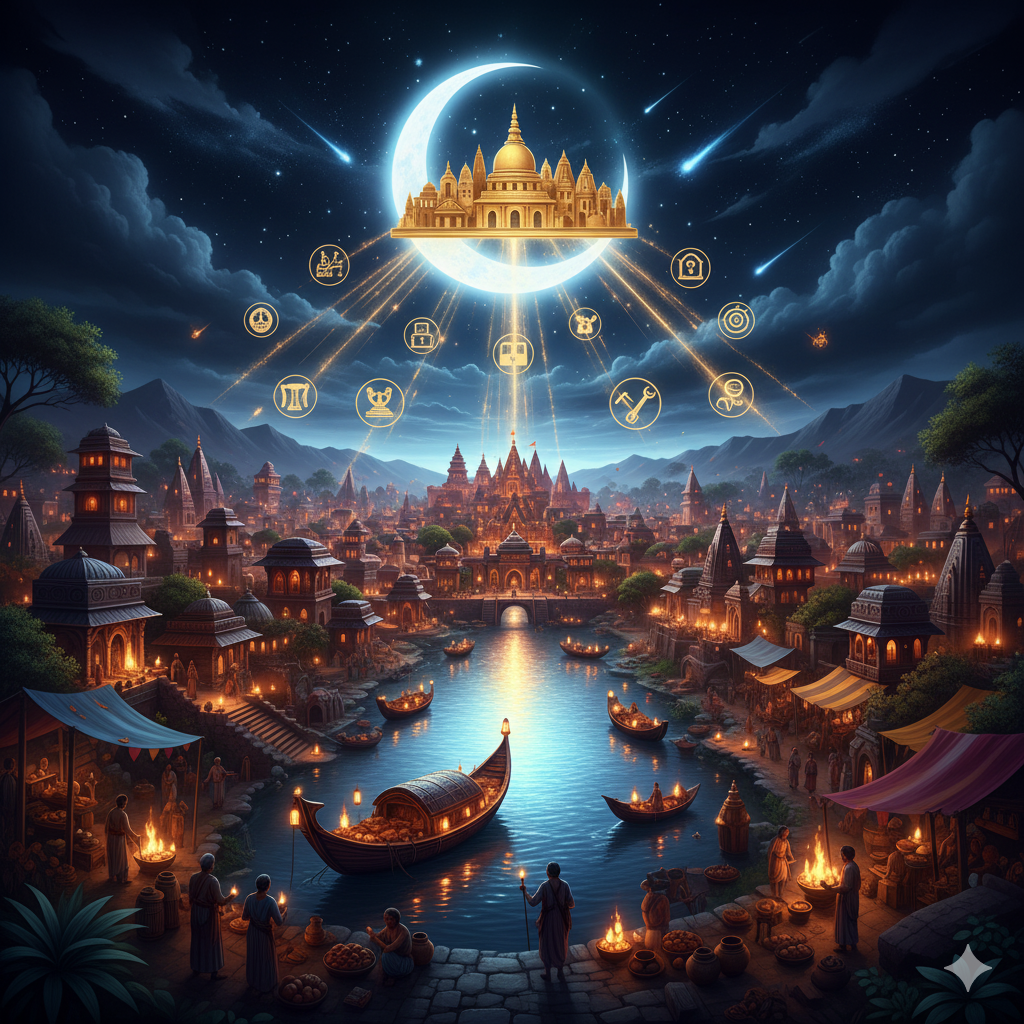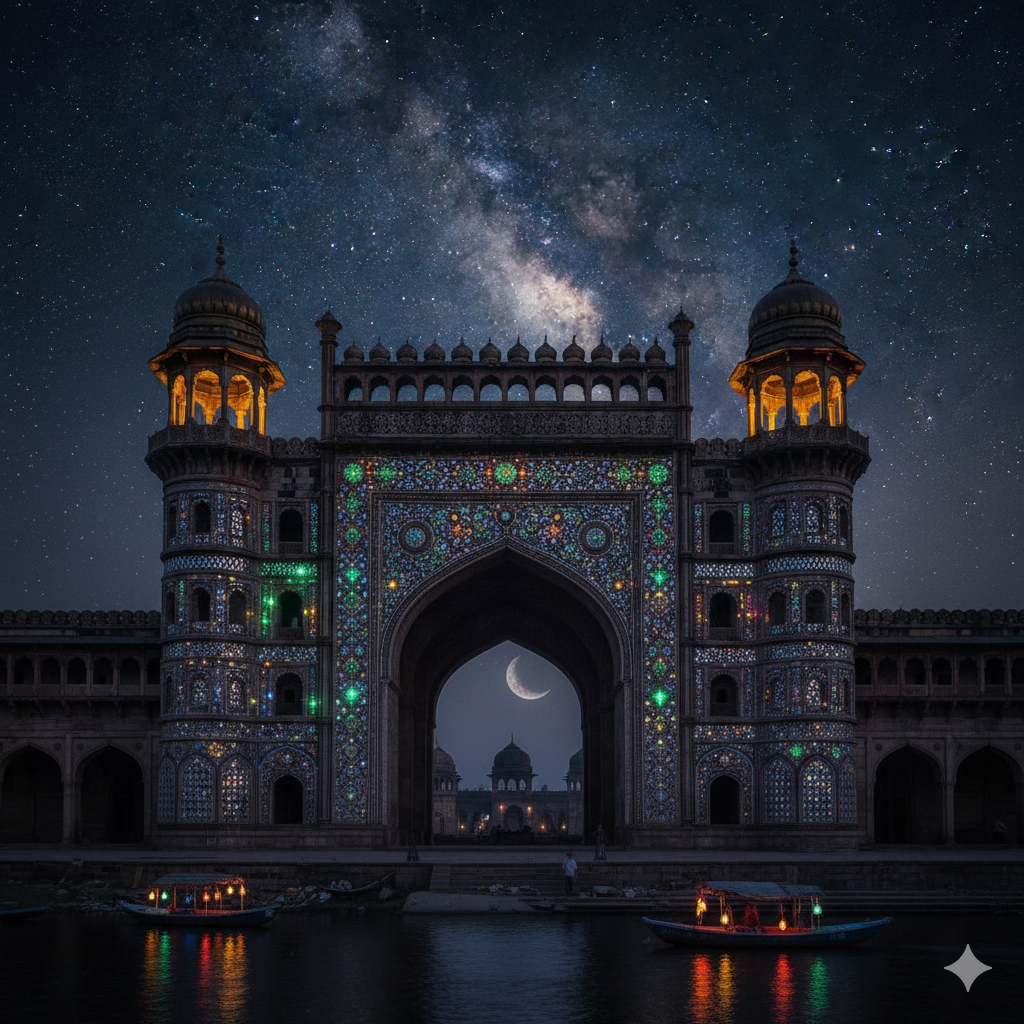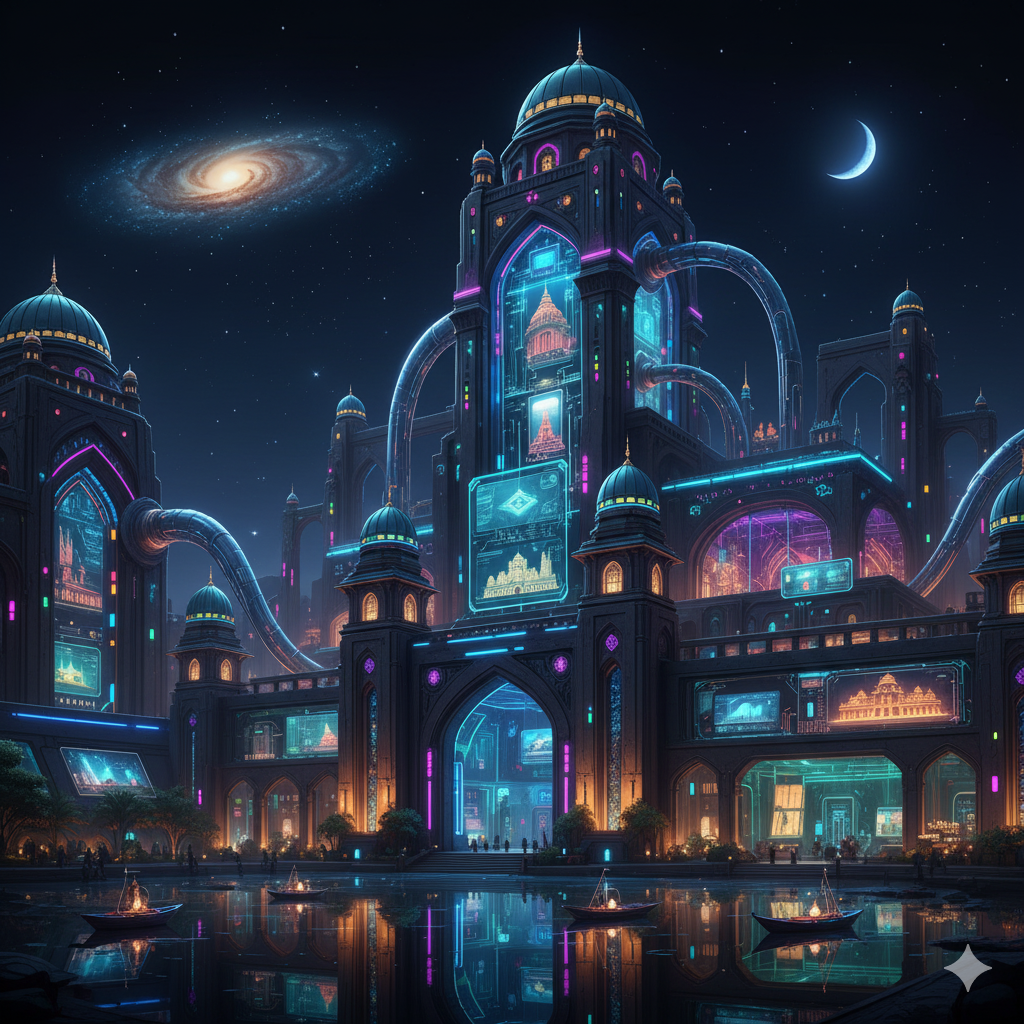Introduction
The term Second Urbanization refers to the period in Indian history, roughly between 600 BCE and 300 BCE, marked by the emergence of large urban centers, trade hubs, and political states across the Gangetic plains. Unlike the First Urbanization of the Indus Valley Civilization, which was concentrated in western India and primarily focused on fortified cities with planned layouts, the Second Urbanization was characterized by:
- Emergence of Mahajanapadas (large states)
- Urban centers and fortified towns
- Increased trade and economic specialization
- Rise of new religious and philosophical movements, notably Buddhism and Jainism
- Evolution of governance systems, including monarchies and republican states (ganarajyas)
Uttar Pradesh, located at the heart of the Gangetic plains, played a crucial role during this period. Its fertile alluvial lands, strategic river networks, and proximity to major trade routes enabled it to become a center for urban growth, political consolidation, economic prosperity, and cultural development.
This article provides a detailed analysis of Uttar Pradesh’s role in the Second Urbanization, highlighting its urban centers, political structures, economic activities, cultural contributions, and long-term significance in ancient Indian history.
1. The Context of Second Urbanization
1.1 Temporal and Spatial Scope
- Timeframe: Approximately 600 BCE – 300 BCE, overlapping with the late Vedic period and early Magadha ascendancy.
- Geographical Focus: The Gangetic plains (modern UP, Bihar, and parts of Madhya Pradesh).
- Key Features:
- Formation of 16 Mahajanapadas, large territorial states.
- Development of urban settlements, fortifications, and marketplaces.
- Establishment of religious centers and educational hubs.
1.2 Differences from First Urbanization
| Feature | First Urbanization (Indus Valley) | Second Urbanization (Gangetic Plains) |
|---|---|---|
| Period | 2600–1900 BCE | 600–300 BCE |
| Settlement Type | Planned cities with grid patterns | Fortified towns, urban clusters |
| Governance | Centralized authority, possibly priest-kings | Monarchies and republican councils (ganarajyas) |
| Trade | Long-distance trade, standardized weights | Regional and inter-regional trade, local markets |
| Religion | Early ritual practices | Emergence of Buddhism, Jainism, Vedic traditions |
| Material Culture | Terracotta, seals, beads | Pottery, metalwork, coins, inscriptions |
2. Strategic Importance of Uttar Pradesh
Uttar Pradesh provided geographical, economic, and cultural advantages that made it central to the Second Urbanization:
- Fertile Gangetic Plains: Supported intensive agriculture (rice, wheat, barley) and surplus production.
- River Networks: The Ganga, Yamuna, Ghaghara, Gomti, and Sarayu rivers facilitated trade, transportation, and urban settlement.
- Trade Routes: Served as a crossroad between eastern, central, and northwestern India, connecting major Mahajanapadas.
- Resource Availability: Clay for pottery, stones for construction, and forests for timber and fuel.
- Cultural Convergence: Interaction between Vedic, tribal, and emerging Buddhist-Jain traditions.
These factors enabled Uttar Pradesh to emerge as a center for urbanization, trade, and culture during the Second Urbanization.
3. Urban Centers in Uttar Pradesh
Several important towns and cities in ancient Uttar Pradesh played a key role in urbanization:
3.1 Shravasti (Kosala)
- Location: Modern Bahraich district, along the Rapti river.
- Urban Features: Fortifications, streets, markets, residential quarters.
- Economic Role: Agriculture, river trade, and craft production.
- Cultural Significance: Early Buddhist monasteries; Buddha spent several rainy seasons here.
3.2 Kaushambi (Vatsa)
- Location: Modern Allahabad/Prayagraj district, along the Yamuna river.
- Urban Features: Fortified city, market hubs, residential areas.
- Economic Role: Thriving riverine trade; production of pottery, textiles, and metal goods.
- Cultural Significance: Prominent Buddhist center; visited by Buddha; early educational hubs.
3.3 Mathura (Surasena)
- Location: Modern Mathura district, along the Yamuna river.
- Urban Features: Fortified urban settlements, trade quarters, artisan workshops.
- Economic Role: Trade in cattle, grains, textiles, and crafts.
- Cultural Significance: Religious and artistic hub; terracotta art and Vaishnavite centers.
3.4 Kushinagar (Malla Republic)
- Location: Modern Kushinagar district, near the Gomti river.
- Urban Features: Small but organized settlements; monasteries and stupas.
- Economic Role: Agriculture, trade along rivers.
- Cultural Significance: Mahaparinirvana site of Buddha; early centers of learning.
3.5 Ahichchhatra (Panchala)
- Location: Modern Bareilly district.
- Urban Features: Fortified city, administrative centers, residential quarters.
- Economic Role: Agriculture and craft production; trade with neighboring states.
- Cultural Significance: Early Vedic and ritualistic centers; influence on Mahabharata narratives.
4. Political Role of Uttar Pradesh in Second Urbanization
Uttar Pradesh was home to several Mahajanapadas, including Kosala, Vatsa, Panchala, Surasena, Malla, and partially Anga. Their political contributions included:
4.1 Monarchies
- Kosala, Vatsa, and Surasena were primarily monarchies.
- Centralized authority allowed efficient administration, taxation, and military organization.
- Capitals like Shravasti and Kaushambi became centers of governance and diplomacy.
4.2 Republican States (Ganarajyas)
- Malla republic in Kushinagar exemplified oligarchic republican governance.
- Governance by assembly councils (sabha or parishad) ensured participatory decision-making.
- Executives were chosen by consensus or rotation, reflecting early democratic practices.
4.3 Political Interaction and Alliances
- Uttar Pradesh states interacted with neighboring Mahajanapadas like Magadha, Anga, and Kuru.
- Formed alliances, trade agreements, and occasional conflicts.
- Political competition spurred urban growth and economic development.
5. Economic Contributions
5.1 Agriculture
- Fertile alluvial soil supported wheat, barley, rice, and pulses.
- Surplus production led to specialization in crafts and trade.
5.2 Trade and Commerce
- Riverine trade: Ganga, Yamuna, and Ghaghara facilitated transport of goods.
- Market towns: Kaushambi, Mathura, and Shravasti were major trade hubs.
- Interregional trade: Connected to eastern (Magadha) and western (Kuru) Mahajanapadas.
5.3 Craft Production
- Pottery and terracotta figurines for domestic and religious use.
- Metalwork: Copper and iron tools, weapons, and ornaments.
- Textiles and beads: Important trade commodities.
6. Cultural and Religious Contributions
6.1 Buddhism
- Uttar Pradesh republics and monarchies were key in Buddha’s life and teachings.
- Shravasti, Kaushambi, Kushinagar, and Mathura became major Buddhist centers.
- Early monasteries and stupas facilitated learning, meditation, and community life.
6.2 Jainism
- Republics like Kosala also supported early Jain communities.
- Contributed to religious discourse, ethical teachings, and philosophical development.
6.3 Vedic and Folk Traditions
- Panchala and Kuru continued Vedic rituals and ceremonial practices.
- Festivals, sacrifices, and civic rituals maintained social cohesion.
6.4 Education and Learning Centers
- Urban centers served as hubs for philosophical debates, administrative training, and religious learning.
- Early examples of gurukulas and monastic schools.
7. Urban Planning and Architecture
- Fortifications: Cities like Kaushambi, Ahichchhatra, and Mathura had defensive walls.
- Residential Layouts: Organized neighborhoods and artisan quarters.
- Markets: Centralized marketplaces facilitating trade.
- Religious Structures: Early stupas, monasteries, and temples.
Urban planning reflected a balance of defense, commerce, and religious practice.
8. Governance Innovations
- Monarchies: Centralized taxation, administrative hierarchy, and military organization.
- Republics: Participatory assemblies, elected executives, and advisory councils.
- Local Governance: Village councils (grama sabhas) managed daily civic affairs.
- Judicial Systems: Dispute resolution at both urban and village levels.
These innovations enhanced political stability and economic growth.
9. Uttar Pradesh as a Cultural and Economic Hub
- Strategic location along rivers enhanced inter-regional trade and cultural exchange.
- Urban centers became crossroads for religious, philosophical, and artistic developments.
- Terracotta art, coins, inscriptions, and urban layouts reflected technological and artistic sophistication.
10. Long-term Significance
- Uttar Pradesh’s urban centers laid the foundation for the Mauryan Empire and later kingdoms.
- Republican traditions influenced panchayati governance in medieval and modern India.
- Religious and educational institutions shaped Buddhist and Jain intellectual traditions.
- Economic prosperity facilitated regional integration and cultural exchange.
11. Challenges in Studying the Second Urbanization
- Limited Archaeological Excavations: Some ancient cities remain unexcavated.
- Fragmentary Literary Sources: Buddhist, Jain, and Vedic texts provide partial accounts.
- Urban Decay and Transformation: Modern settlements overlay ancient urban sites.
- Need for Interdisciplinary Research: Combining archaeology, epigraphy, and environmental studies.
Despite these challenges, ongoing research highlights Uttar Pradesh’s pivotal role in Second Urbanization.
Conclusion
The Second Urbanization of India marks a transformative phase, characterized by urban growth, economic specialization, and political consolidation. Uttar Pradesh, with its fertile plains, strategic rivers, and central location, was at the heart of this development. Key contributions include:
- Urban Centers: Shravasti, Kaushambi, Mathura, Kushinagar, Ahichchhatra.
- Political Innovation: Monarchies and republican states (ganarajyas) with assemblies and councils.
- Economic Prosperity: Agriculture, trade, craft production, and riverine commerce.
- Cultural and Religious Significance: Centers of Buddhism, Jainism, Vedic practices, and education.
- Long-term Legacy: Influenced governance, urbanization, and cultural traditions in later Indian history.
Uttar Pradesh’s role in the Second Urbanization demonstrates the dynamic interplay between geography, economy, governance, and culture, making it a key region in ancient Indian history. Its cities and states were not only centers of political power but also hubs of cultural, educational, and economic development, shaping the trajectory of the Indian subcontinent for centuries to come.




